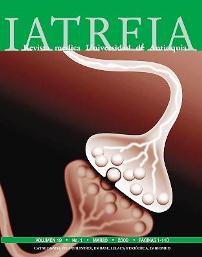Lymphocytes as a cell model to study alzheimer’s and parkinson’s diseases
DOI:
https://doi.org/10.17533/udea.iatreia.4262Keywords:
Alzheimer, Apoptosis, Lymphocytes, Model, Oxidative stress, ParkinsonAbstract
Alzheimer’s disease (AD) and parkinson’s disease (PD) are two common progressive neurodegenerative disorders that affect a large group of individuals in Antioquia, Colombia. Up till now, there is not an effective and definitive therapeutic treatment aimed to reduce or retard the clinic and pathologic symptoms induced by both devastating diseases. Thus, the biochemical mechanism(s) involved in neural loss has mainly been studied in biological models. In this article the authors, based on their own scientific experience and others, have proposed lymphocytes as a cellular model to study the molecular signalling mechanism induced by oxidative stress in AD and PD. Remarkably, lymphocytes and neurons are cellularly and biochemically alike. Indeed, lymphocytes express at least six different biological systems such as catecholaminergic, serotonergic, acetylcholinergic, glutamatergic, noradrenergic and GABAergic systems considered to be exclusively pertain to neural cells!. Given that lymphocytes are post-mitotic cells (i.e. Go cell cycle) and possess the synthesis, transport and processing systems of amyloid-beta precursor protein (AβPP), presenilins and parkin proteins, these cells constitute not only an ideal bio-model to better understanding of the pathological signalling in those neurodegenerative processes, but also represent a meaningful tool to design innovative and rational therapeutic strategies focussed to arrest the neuronal death in Alzheimer’s and Parkinson’s patients from Antioquia.
Downloads
Downloads
Published
How to Cite
Issue
Section
License
Papers published in the journal are available for use under the Creative Commons license, specifically Attribution-NonCommercial-ShareAlike 4.0 International.
The papers must be unpublished and sent exclusively to the Journal Iatreia; the author uploading the contribution is required to submit two fully completed formats: article submission and authorship responsibility.














